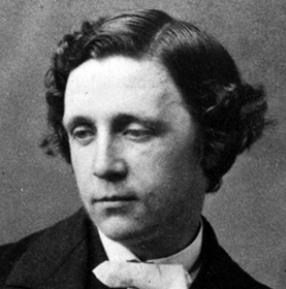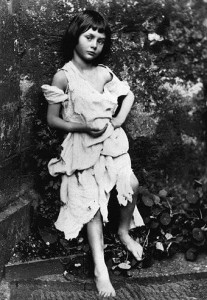
Lewis Carroll, the acclaimed author of our 1893 illustrated edition of Alice’s Adventures in Wonderland (often shortened to Alice in Wonderland), was actually born Charles Lutwidge Dodgson in Cheshire, England in 1832. In addition to being an accomplished writer, Carroll was also a prestigious mathematician, an Anglican deacon, and a logician (someone who contemplates/ studies logic). This last part of his resume is particularly interesting due to the fact that most of his written works, including Alice’s Adventures in Wonderland, have been classified within the genre of nonsense literature.
While this may seem like a contradictory pairing (having a man who studies the tenants of logic writing nonsensical stories), it actually appears to be an appropriate match. According to Wim Tigges (whose very name seems to predispose him to this research), nonsense literature “balances elements that make sense with some that do not, with the effect of subverting language conventions or logical reasoning”. In essence, for one to be a proponent of nonsense literature, one needs to actually be very logical. Tigges further elaborates stating that “the effect of nonsense is often caused by an excess of meaning, rather than a lack of it”. Therefore, for those of you who have read Alice in Wonderland, the characters of the Cheshire Cat and the Mad Hatter are not simply crazed, ridiculous characters that Carroll put in to add a bit of colour to his story, but are actually infused with so much meaning that they seem illogical (or at least that is what Tigges would have us believe).
But, let’s get back to Carroll and his wonderfully quirky story.

How did such a man as Carroll come up with the character of Alice? It is widely assumed that Alice was actually inspired by Alice Liddell, the daughter of the Dean of Carroll’s university. Despite Carroll’s own refutations of this claim in his personal letters, it is clear that Carroll invented the basis for Alice and her Wonderland as a way to entertain the “real” Alice and her sisters upon a rowing trip in 1862. Encouraged by others who read his story, Carroll published Alice’s Adventures in Wonderland in 1865. This particular edition had illustrations done by Sir John Tenniel, whose artwork survives through stylistic imitations in our very own 1893 edition!
After publishing Alice in Wonderland, Carroll became incredibly successful going on to continue the Alice series with the sequel, Through the Looking Glass. Carroll died in Guildford, Surrey, on January 14th 1898.